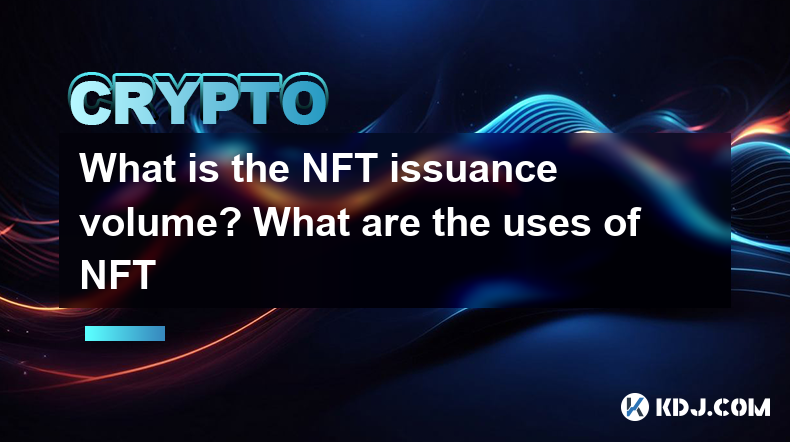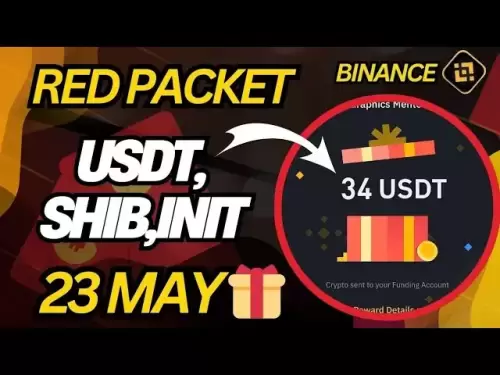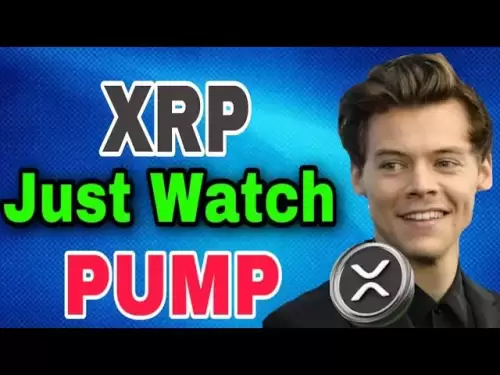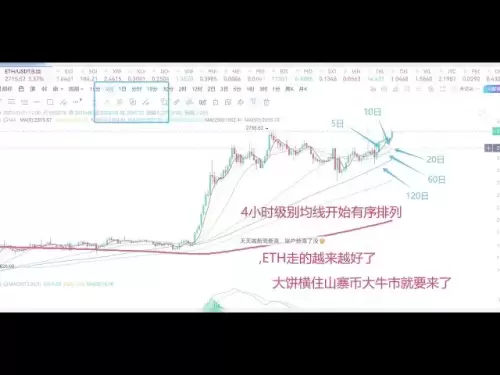-
 Bitcoin
Bitcoin $110,540.2592
0.02% -
 Ethereum
Ethereum $2,658.9399
1.84% -
 Tether USDt
Tether USDt $0.9994
-0.06% -
 XRP
XRP $2.4198
1.04% -
 BNB
BNB $684.2350
0.68% -
 Solana
Solana $180.8773
2.82% -
 USDC
USDC $0.9994
-0.03% -
 Dogecoin
Dogecoin $0.2431
2.20% -
 Cardano
Cardano $0.8078
2.67% -
 TRON
TRON $0.2732
0.27% -
 Sui
Sui $3.8239
-4.98% -
 Hyperliquid
Hyperliquid $35.1111
14.99% -
 Chainlink
Chainlink $16.6229
2.24% -
 Avalanche
Avalanche $25.0111
4.17% -
 Stellar
Stellar $0.3008
1.22% -
 Shiba Inu
Shiba Inu $0.0...01538
2.24% -
 Bitcoin Cash
Bitcoin Cash $436.7764
5.46% -
 Hedera
Hedera $0.2030
1.43% -
 UNUS SED LEO
UNUS SED LEO $8.8635
-0.02% -
 Toncoin
Toncoin $3.1381
0.06% -
 Polkadot
Polkadot $4.9174
2.66% -
 Litecoin
Litecoin $99.9451
1.95% -
 Monero
Monero $389.3669
-1.44% -
 Bitget Token
Bitget Token $5.7750
9.95% -
 Pepe
Pepe $0.0...01544
11.44% -
 Pi
Pi $0.7952
-4.61% -
 Dai
Dai $0.9997
-0.01% -
 Ethena USDe
Ethena USDe $1.0001
-0.05% -
 Uniswap
Uniswap $6.4362
2.21% -
 Bittensor
Bittensor $460.4359
-2.22%
What is the NFT issuance volume? What are the uses of NFT
The NFT issuance volume, which reflects market activity and engagement, is influenced by factors such as demand, blockchain infrastructure, platform availability, and the utility and value proposition of NFTs.
Feb 06, 2025 at 12:13 am

What is the NFT issuance volume? What are the uses of NFT?
Key Points:
- Types of NFT issuance volume
- Factors affecting NFT issuance volume
- Various use cases of NFTs
- Tips for investing in NFTs
Types of NFT Issuance Volume
- NFT issuance volume refers to the number of newly issued NFTs within a given period, typically measured by the total daily, weekly, or monthly count.
- It serves as an indicator of market activity, indicating the level of interest and engagement within the NFT ecosystem.
Factors Affecting NFT Issuance Volume
- Market demand: High demand for specific types of NFTs, such as collectibles, art, or gaming assets, can lead to increased issuance volume.
- Blockchain infrastructure: Improvements to blockchain technology, such as faster transaction speeds or lower gas fees, can make it more attractive to issue and trade NFTs.
- Platform availability: The availability of user-friendly NFT marketplaces and platforms can lower the barriers to entry for NFT creators, contributing to higher issuance volume.
- Utility and value proposition: NFTs that provide clear utility or value, such as access to exclusive content or real-world benefits, are more likely to generate high issuance volume.
Various Use Cases of NFTs
- Digital Art and Collectibles: NFTs have gained popularity as a means of representing ownership and authenticity of digital art and collectibles.
- Gaming: NFTs can be used to represent in-game assets such as weapons, characters, and virtual land, enabling players to own and trade these digital items.
- Music and Entertainment: NFTs are being adopted to distribute and protect ownership of music and other entertainment content, offering new revenue streams for creators.
- Real-World Assets: NFTs can be tied to real-world physical assets, such as real estate or luxury goods, providing proof of ownership and enabling fractional ownership.
- Identity and Access Management: NFTs can serve as digital identities or access keys for online communities or virtual worlds, granting users unique privileges and experiences.
Tips for Investing in NFTs
- Research and due diligence: Carefully research the market, the specific NFT project, and its creators before making an investment decision.
- Diversify your portfolio: Avoid concentrating investments in a single NFT or project to minimize risk.
- Consider the long-term potential: Look beyond immediate hype or speculation, and invest in NFTs that have intrinsic value or utility that will sustain over time.
- Secure storage: Use a secure wallet or other storage solution to safeguard your NFTs from theft or loss, as NFTs are unique and cannot be replaced once lost.
- Keep up with industry trends: Stay informed about developments in the NFT ecosystem, including new technologies, regulations, and market trends.
FAQs:
Q: How can I track NFT issuance volume?
A: There are various NFT market analysis websites and platforms that provide real-time and historical data on NFT issuance volume, such as CryptoSlam and NonFungible.com.
Q: What are the most popular NFT categories for issuance?
A: Collectibles, art, and gaming-related NFTs consistently rank among the most popular categories in terms of issuance volume.
Q: Can I create and issue my own NFTs?
A: Yes, most NFT marketplaces allow creators to mint and issue their own NFTs. However, it requires technical knowledge of blockchain technology and an understanding of the specific platform you choose to use.
Disclaimer:info@kdj.com
The information provided is not trading advice. kdj.com does not assume any responsibility for any investments made based on the information provided in this article. Cryptocurrencies are highly volatile and it is highly recommended that you invest with caution after thorough research!
If you believe that the content used on this website infringes your copyright, please contact us immediately (info@kdj.com) and we will delete it promptly.
- Is it the right time to go all in? Here's why whales are betting big on the meme coins.
- 2025-05-23 14:40:13
- BONK, at the time of writing, seemed to be in a great position to post extra gains, despite a +140% recovery since April.
- 2025-05-23 14:40:13
- How to Find the Next Big Crypto Project Before It Explodes
- 2025-05-23 14:35:14
- The Meme Coin Season Never Sleeps—And in May 2025, These 3 Tokens Are Leading the Stampede
- 2025-05-23 14:35:14
- Trump hosts closed-door dinner for hundreds of top investors in his crypto memecoin
- 2025-05-23 14:30:13
- Photos from within US President Donald Trump's secretive dinner for his top memecoin buyers show attendees were treated to a three-course meal and gift bags
- 2025-05-23 14:30:13
Related knowledge

What is Ethereum’s Slashing mechanism and how to punish malicious behavior?
Feb 20,2025 at 03:08am
Key PointsOverview of slashingDifferent types of slashing in EthereumIncentives and consequences of slashingIdentifying and reporting slashed validatorsOngoing discussions and potential improvementsEthereum's Slashing Mechanism: Punishing Malicious BehaviorEthereum's slashing mechanism is an essential tool for ensuring network security and punishing mal...

What is the verifier node of Ethereum and how to become a verifier?
Feb 19,2025 at 06:00pm
The Verifier Node of Ethereum: A Comprehensive GuideKey Points:What is a Verifier Node?How to Become a Verifier NodeResponsibilities and Rewards of a Verifier NodeMinimum Requirements for Becoming a Verifier NodePotential Difficulties in Running a Verifier Node1. What is a Verifier Node?A Verifier Node is an independent entity on the Ethereum network th...

What is Ethereum’s staking, and how to participate and earn money?
Feb 19,2025 at 04:37pm
Key Points:Understanding Ethereum's Staking MechanismSteps to Participate in StakingBenefits and Rewards of StakingSecurity and Risk ConsiderationsTechnical Requirements and Hardware OptionsPotential Challenges and Troubleshooting TipsFAQs on Ethereum StakingWhat is Ethereum's Staking?Proof-of-Stake (PoS) is a consensus mechanism used in blockchain netw...

What is Ethereum’s DAO (Decentralized Autonomous Organization) and how does it work?
Feb 20,2025 at 03:12am
Key PointsDefinition and Structure of a DAOGovernance and Decision-Making in DAOsBenefits and Use Cases of DAOsChallenges and Limitations of DAOsWhat is Ethereum's DAO (Decentralized Autonomous Organization) and How Does It Work?Definition and Structure of a DAOA Decentralized Autonomous Organization (DAO) is an innovative governance and management fram...

What is Ethereum's multi-signature wallet and how to improve security?
Feb 20,2025 at 02:18pm
Key Points:Understanding the Concept of a Multi-Signature WalletBenefits and Drawbacks of Multisig WalletsRequirements for Setting Up a Multisig WalletStep-by-Step Guide to Generating a Multisig WalletImplementing Strategies for Enhanced Security1. Understanding the Concept of a Multi-Signature WalletA multi-signature (multisig) wallet in the Ethereum e...

What is Ethereum's oracle and how to provide data for smart contracts?
Feb 21,2025 at 01:30am
Key Points:Understanding the concept of oracles in EthereumExploring different types of oraclesDetailed guide on how to provide data for smart contractsAddressing potential challenges and considerationsWhat is Ethereum's Oracle?Oracles are crucial components in the Ethereum ecosystem, enabling smart contracts to access real-world data and off-chain even...

What is Ethereum’s Slashing mechanism and how to punish malicious behavior?
Feb 20,2025 at 03:08am
Key PointsOverview of slashingDifferent types of slashing in EthereumIncentives and consequences of slashingIdentifying and reporting slashed validatorsOngoing discussions and potential improvementsEthereum's Slashing Mechanism: Punishing Malicious BehaviorEthereum's slashing mechanism is an essential tool for ensuring network security and punishing mal...

What is the verifier node of Ethereum and how to become a verifier?
Feb 19,2025 at 06:00pm
The Verifier Node of Ethereum: A Comprehensive GuideKey Points:What is a Verifier Node?How to Become a Verifier NodeResponsibilities and Rewards of a Verifier NodeMinimum Requirements for Becoming a Verifier NodePotential Difficulties in Running a Verifier Node1. What is a Verifier Node?A Verifier Node is an independent entity on the Ethereum network th...

What is Ethereum’s staking, and how to participate and earn money?
Feb 19,2025 at 04:37pm
Key Points:Understanding Ethereum's Staking MechanismSteps to Participate in StakingBenefits and Rewards of StakingSecurity and Risk ConsiderationsTechnical Requirements and Hardware OptionsPotential Challenges and Troubleshooting TipsFAQs on Ethereum StakingWhat is Ethereum's Staking?Proof-of-Stake (PoS) is a consensus mechanism used in blockchain netw...

What is Ethereum’s DAO (Decentralized Autonomous Organization) and how does it work?
Feb 20,2025 at 03:12am
Key PointsDefinition and Structure of a DAOGovernance and Decision-Making in DAOsBenefits and Use Cases of DAOsChallenges and Limitations of DAOsWhat is Ethereum's DAO (Decentralized Autonomous Organization) and How Does It Work?Definition and Structure of a DAOA Decentralized Autonomous Organization (DAO) is an innovative governance and management fram...

What is Ethereum's multi-signature wallet and how to improve security?
Feb 20,2025 at 02:18pm
Key Points:Understanding the Concept of a Multi-Signature WalletBenefits and Drawbacks of Multisig WalletsRequirements for Setting Up a Multisig WalletStep-by-Step Guide to Generating a Multisig WalletImplementing Strategies for Enhanced Security1. Understanding the Concept of a Multi-Signature WalletA multi-signature (multisig) wallet in the Ethereum e...

What is Ethereum's oracle and how to provide data for smart contracts?
Feb 21,2025 at 01:30am
Key Points:Understanding the concept of oracles in EthereumExploring different types of oraclesDetailed guide on how to provide data for smart contractsAddressing potential challenges and considerationsWhat is Ethereum's Oracle?Oracles are crucial components in the Ethereum ecosystem, enabling smart contracts to access real-world data and off-chain even...
See all articles
























































































